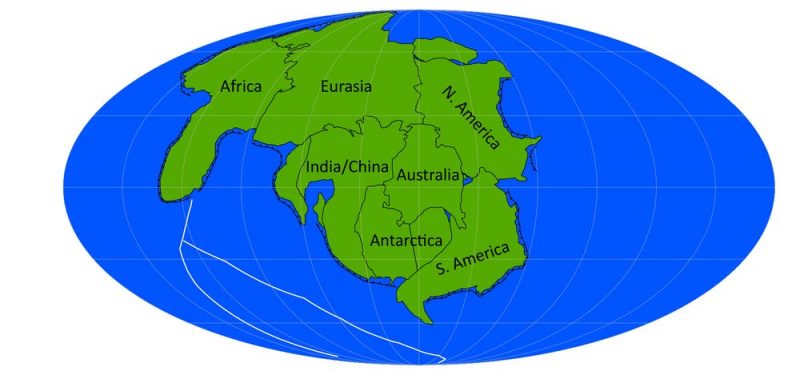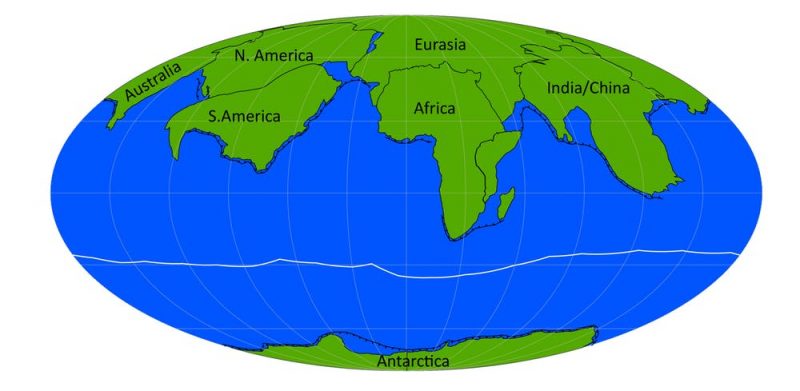We’ve pretty much figured out there is a cycle to continental drift — periodically on a geologic timescale, the continents come together to form one huge supercontinent, which stays intact for several hundred million years before breaking up. The continental plates move apart, then eventually, say 400-600 million years, they recombine again.
The last supercontinent was called Pangea. It formed about 310 million years ago and stayed together for around 180 million years.
So what happens next? Scientists believe we’re about halfway through the cycle, which means the next supercontinent should take shape in 200-250 million years. What will this one look like and (assuming humans are still here) what will it be called?
Based on what we know today, scientists have developed four scenarios, dubbed Novopangea, Pangea Ultima, Aurica, and Amasia.
The most likely scenario is Novopangea, because it’s what will happen if present-day conditions continue.

But if other factors come into play, things could turn out completely differently. The most extreme possibility is Amasia.

It’s just a shame none of us will be around to see what actually happens.
To read about all four scenarios, visit https://earthsky.org/earth/what-will-earths-next-supercontinent-look-like.
